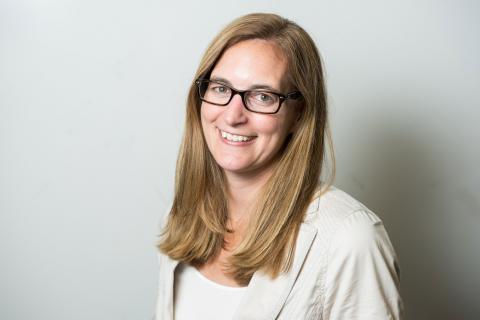Why Schools Need to Change
Postsecondary Trending Now: Too Many Students Start College But Don’t Finish
Topics

Today’s learners face an uncertain present and a rapidly changing future that demand far different skills and knowledge than were needed in the 20th century. We also know so much more about enabling deep, powerful learning than we ever did before. Our collective future depends on how well young people prepare for the challenges and opportunities of 21st-century life.
Although access to higher education has improved, college completion rates have not. What can we do to better serve our most vulnerable student populations?
Those of us who want to fix what’s broken in our education system tend to focus on problems. Before I get into one of those problems—the significant number of students who start college but don’t finish—I want to celebrate some positive news. It comes from the K-12 space, and it’s from last April, but this news has implications for postsecondary student success. And positive news always helps when you get a little weary of chipping away at the problems.
The on-time high school graduation rate has steadily increased by a point or two each year for the last 10 years and the most recent statistics top 80 percent. And there are one-third fewer high school “dropout factories” than there were in 2002.
I found these statistics in Building a Grad Nation: Progress and Challenge in Ending the High School Dropout Epidemic. The report’s authors credit the high school reforms put in place over the past decade—like small schools; more personalized, engaging learning environments; multiple pathways; and targeted interventions.
The bottom line: these efforts are making a difference!
The report isn’t all butterflies and roses, though. Its authors point out persistent gaps in high school graduation rates by income level and the especially low graduation rates in high-poverty urban centers. There is still work to be done. But the report is an uplifting read and filled with solid recommendations for continuing to move forward.
This brings me to the impact on higher education and the work to be done to improve postsecondary student success.
The New Forgotten Half: Students with Some College but No Credentials
From Building a Grad Nation, we know that more students than ever are graduating high school, and from another report, The New Forgotten Half and Research Directions to Support Them from the William T. Grant Foundation, we know that more and more high school graduates continue their education in college—86 percent of on-time high school graduates attend college within eight years after high school.
There are more students going to college, but….
Although access has improved, college completion is not. Here’s the conclusion taken from the report’s website:
In The New Forgotten Half and Research Directions to Support Them, James Rosenbaum and colleagues find that many young people who enroll in community college fail to complete their studies and attain a degree, and that these youth fare no better in the labor market than those with only a high school diploma.
This sobering news combined with data about growing student loan debt has important implications for the messages we send to students about “college for all.” It reminds me of the responsibility we take on when we encourage students to pursue postsecondary education.
It becomes our job to make sure students are equipped with the skills and the support they need to get to the degree, whether it's a bachelor's or associate's degree, or even a professional certificate.
Emerging Solutions: Career Pathways and Step-Credentials
I am heartened by strategies to address this reality that are emerging within the network of NGLC grantees. We can look to their models for adoptable solutions that lift up the “new forgotten half.”
Here are two examples:
- Degree in 3, a breakthrough degree program from Columbus State University and the University System of Georgia, offers a Bachelor of Arts degree in communication with a focus on civic leadership. With five seven-week sessions per year, the program may be completed within three years. A key innovation of this online degree program is staged credentialing. Degree in 3 provides a certificate after successful completion of the first year followed by an associate’s degree after two years and then culminates in a bachelor’s degree at the end of the program. As described in the grantee profile, “This staged method reinforces motivation to progress, increases marketability should a student leave, and eases return and completion should a stopout occur.” And it may lead to labor market returns: according to the New Forgotten Half, those with credentials are more likely to be employed and have higher earnings.
- Vertus Charter School in Rochester, New York, just opened this past fall. It is a year-round career prep high school for boys. Boys in this local community face high odds of dropping out, violence, unemployment, and prison. We’re not talking about 80 percent graduation rates here—the high school graduation rate for African American and Latino boys in Rochester is one of the poorest in the nation at an appalling nine to ten percent. Vertus prepares all of its students to be successful in college. At the same time, though, the Vertus model provides a wide range of postsecondary options available to middle-class youth, options that involve both work and college. Every student is expected to graduate with a postsecondary credential that will prepare him for a skilled job. With a skilled job, a Vertus graduate can support himself, potentially help his family, and have options for college. Learn more about the Vertus model on its grantee page.
Do you know of other solutions? Please share existing examples and new ideas in the comments section below.




